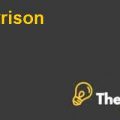
Introduction
Risk arbitrage, or merger arbitrage, refers to an investment strategy that attempts to capitalize on the outcome of a merger situation after it has been disclosed to the public.
In many announced mergers, a discount exists between the target company’s stock price and the funds or consideration proposed in the merger. Merger arbitrageurs gain from the elimination of this discount when the merger is complete. In a cash deal, arbitrageurs purchase the equity of the target company and in a stock-for-stock deal, they purchase the target company’s stock and sell short the stock of the buying company. This simple trading strategy can often become complicated by the presence of multiple bidders for the target, defensive strategies in hostile takeovers, or the use of collars that changes the terms of the deal based on the performance.
Arbitrageurs want compensation for the risks that are attached with the mergers. In hostile deals, arbitrageurs can own a significant percentage of the target company and so they can affect the failure or success of the bid. In situations where multiple bidders exists, arbitrageurs also can determine which bidder is successful. There are many explanations given for the discounts in the prices of the target firm’s shares. One explanation is that investors require compensation for the risks to the proposed merger. A merger is a complicated business event and many fund managers do not have the expertise nor the time to follow the company once it has been bid for by an acquirer.
Overview
Farallon Capital managed a hedge fund, which was founded in 1986 by Tom Steyer and Fleur Fairman. David Cohen joined Farallon in 1993 and in 1995, Bill Duhamel joined the company. In 1998, Farallon Capital had several billion dollars in assets under management with more than eight funds. Its clients were primarily major university endowments and wealthy individuals. As manager of the funds, Farallon charged investors traditional hedge fund fees with a percentage of its revenues based on performance. The firm had thirty-five employees, including fifteen investment professionals. Farallon believed that a typical rule of thumb in the arbitrage community was a required return of 3 x LIBOR.
British Telecommunications was the primary provider of telephony services in the United Kingdom, with £14.4 billion in revenue and £2.0 billion in net income for its 1996 fiscal year. On November 1, 1996, British Telecom decided to merge with MCI Communications, which would take nine to twelve months to complete, but on August 1, 1997 British Telecom announced that it was conducting an in-depth review of its bid for MCI Communications. Farallon had taken its initial investment in the $25 billion acquisition by purchasing MCI shares and selling short BT shares since nine months.
MCI sent shocksthroughout the risk arbitrage industry when it announced that it was facing difficulties in attempts to enter the local telephony market, which resulted in an expected $800 million of losses during 1997, and the situation was even worse in 1998. This announcement threatened to expose the innovative transaction between BT and MCI and caused severe trading losses to many merger arbitrage investors.
The BT/MCI investment represented Farallon’s largest risk-arbitrage exposure, and Steyer, Cohen and Duhamel were trying to decide whether to stay in the position, or unwind it and cut their losses. When the United Kingdom press called for BT to amend its bid for MCI, two of the leading Wall Street equity analysts in the telecommunications sector gave their views on the merger that were against the merger, and many of the risk arbitrageurs thought that the deal would still materialize.
Strength Analysis
Farallon Capital’s Equity Arbitrage Group consisted of five research professionals and two traders. The group had invested in 80 to 120 merger arbitrage positions, with an additional 165 to 200 deals being considered closely.
Before forming Farallon Capital, Steyer had gained experience in private equity and distressed securities investing at Goldman, Sachs & Co and Fairman developed expertise in the public markets working at some of the major New York hedge funds. Steyer’s and Fairman’s strengths combined and enabled them to take advantage of public market investment opportunities in risk arbitrage and distressed securities. At Goldman, Cohen had developed abroad understanding of the risk arbitrage business with three years in international risk arbitrage in London, and one year in domestic risk arbitrage in New York City. Bill Duhamel previously worked in Mexico, where he managed a group of cable systems for the private equity firm. Steyer was responsible for Farallon’s overall portfolio, and Cohen and Duhamel were responsible for the BT/MCI merger position.
In managing its portfolios, Farallon placed high emphasis on capital preservation and managed to achieve high returns while experiencing very little volatility since 1989 (see Exhibit 1). Due to historically low volatility of risk-arbitrage investments, clients viewed merger arbitrage as a low-risk investment strategy that generated equity-type returns; thus........................
This is just a sample partial case solution. Please place the order on the website to order your own originally done case solution.













